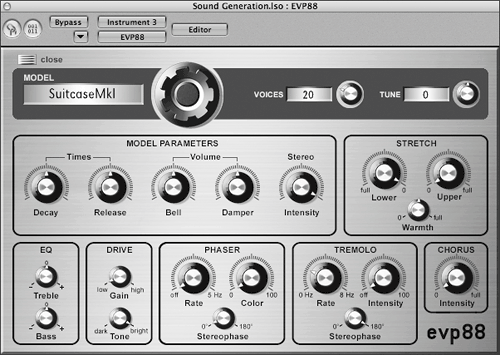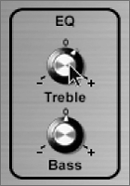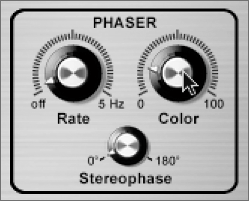Using the EVP88 Vintage Electric Piano
| The EVP88 (like the other instruments in the Vintage Keyboards lineEVD6 and EVB3) is a physically modeled instrument dedicated to simulating the sounds of classic electric pianos such as the Fender Rhodes, Wurlitzer 200A, and Hohner Electra. The instrument generates its sound not by triggering samples but by using complex algorithms that re-create a physical event occurring in the real world. Basically, the EVP88 simulates the physical movement of the various electric piano reeds, tines, and tone bars in the electric and magnetic fields of the pickups found in the original instruments. The result is an extremely accurate and playable instrument that synthesizes the ringing, smacking, and bell-like transients of the attack phase, as well as the hammer action and damper noises. In this exercise you will load, audition, and modify a stock sound, listening to the results.
|
EAN: 2147483647
Pages: 166



